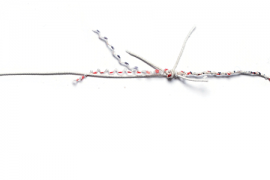
It’s always been a natural mystery how homing pigeons navigate hundreds of miles back to their roosts, or how trout and salmon spend entire lives in the ocean but are able to swim back to the very spot they were born to spawn. Since the late 1960s, researchers have believed that some species of animals have a “hidden” sense called magnetoreception—the ability to perceive very weak signals from earth’s magnetic field and navigate using those cues. Now, researchers have found evidence that all animals have this sense, including birds, bees, fish, sea turtles, eels, and even some species of salamanders and frogs. (At least one scientist claims humans have it too, but we won’t get into that minefield).
Just how that sense actually works on a molecular and cellular level has been difficult for scientists to figure out. That’s why researchers Sönke Johnsen and Bob Fitak at Duke University decided to solve the puzzle by highlighting the genes in the rainbow trout genome that might be used in magnetoreception.
The researchers bought small trout from a fish farm in North Carolina, keeping them in an aquarium in the basement of their building. They then randomly selected trout from the pool for testing, giving them a burst of magnetic radiation with a machine usually used to magnetize objects like screw-driver tips. After about 10 minutes they then euthanized the trout and took samples of their brains.
The idea was that the magnetic burst would switch on or off certain genes in response to the pulse. After sequencing the DNA of 10 magnetized trout, the researchers compared them to the 40,000 genes previously described…





